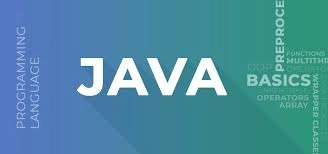Explore the powerful features of Java programming language that make it popular for building reliable, scalable applications. Java remains one of the world’s most popular programming languages, widely used across industries for developing everything from mobile apps to enterprise software and server-side applications. Its enduring popularity is largely due to the unique features that distinguish it from other languages, making it both versatile and powerful.
In this article, we’ll dive deep into the most prominent features of Java, explaining why they’re advantageous for developers and how they contribute to Java’s reputation as a robust, high-performance language.
Understanding Features of Java Programming Language: A Quick Overview

Java, first introduced by Sun Microsystems (now part of Oracle) in the mid-1990s, is a high-level, class-based programming language known for its “write once, run anywhere” capability. This means Java applications can run on any system equipped with a Java Virtual Machine (JVM), making it platform-independent. Java’s success in delivering portable, secure, and multi-threaded applications has set it apart and positioned it as a top choice for software developers.
In this article, we’ll discuss the key features that define Java, helping you understand why it remains an industry standard.
1. Features of Java Programming Language: Platform Independence
Java’s platform independence is one of its most notable features. When developers write Java code, it’s compiled into bytecode by the Java compiler. This bytecode can be executed on any device or operating system equipped with a Java Virtual Machine (JVM), making Java applications highly portable.
This feature allows developers to create applications that can run on any machine, regardless of the underlying operating system—whether it’s Windows, MacOS, or Linux. As a result, developers only need to write code once, saving time and resources that would otherwise be spent adapting code for different platforms.
Example Use Case: Mobile apps created in Java for Android can be used across various Android devices without needing specific adaptations for each one.
2. Features of Java Programming Language: Object-Oriented Programming (OOP)
Java is an object-oriented programming (OOP) language, which is fundamental to its design and architecture. OOP allows developers to model real-world entities through objects, making code modular, scalable, and easier to understand.
Java’s OOP principles—encapsulation, inheritance, polymorphism, and abstraction—enable developers to:
- Reuse code efficiently across projects.
- Simplify complex problems by breaking them into smaller, manageable objects.
- Improve collaboration on large-scale projects through the modular code structure.
For beginners and seasoned developers alike, OOP in Java provides an accessible way to manage code effectively, enhancing productivity and maintainability.
3. Features of Java Programming Language: Simple and Familiar Syntax
Java was designed with simplicity in mind. Developers with a background in C or C++ find Java’s syntax familiar but without some of the complexities and lower-level features of these languages, such as pointers and operator overloading. Java handles many complicated tasks automatically, such as memory allocation and garbage collection, reducing the risk of errors and freeing developers from low-level programming tasks.
Key Benefits of Features of Java Programming Language Simplicity:
- Faster learning curve for beginners.
- Fewer bugs due to managed memory and garbage collection.
- Easier to read and maintain code.
4. Robust Memory Management and Automatic Garbage Collection
Features of Java Programming Language memory management system is designed to reduce memory leaks and improve application stability. With automatic garbage collection, the Java runtime environment manages memory allocation and deallocates memory that is no longer in use.
This feature ensures that applications use memory resources efficiently, avoiding common issues like memory leaks that can lead to crashes. The garbage collector runs periodically, finding and freeing unused objects, which allows Java applications to perform reliably over long periods without excessive memory use.
Example Scenario: In long-running server applications, robust memory management is essential for keeping performance stable, and Java’s automatic garbage collection plays a crucial role in this.
5. Features of Java Programming Language: Multithreading Support

Features of Java Programming Language multithreading capabilities allow programs to perform multiple tasks simultaneously within the same program. In Java, threads are independent paths of execution, and multithreading allows multiple threads to run concurrently, improving performance, particularly in multi-core systems.
This feature is especially valuable for applications that require high performance, like gaming or web servers, where tasks need to be executed concurrently for smoother user experiences. Java’s API includes built-in support for multithreading, making it easier for developers to create responsive and efficient applications.
Key Advantage: Java’s multithreading capabilities enhance resource utilization, making it easier to develop high-performance applications that can efficiently handle multiple tasks at once.
6. High Performance through Just-In-Time Compilation
Features of Java Programming Language are often criticized for being slower than languages like C or C++ due to its interpreted nature. However, Java’s Just-In-Time (JIT) compiler significantly boosts its performance by compiling bytecode into native machine code at runtime, allowing it to execute faster.
The JIT compiler only translates the parts of code that are frequently executed, making it highly efficient and allowing Java applications to run faster. This feature, combined with Java’s automatic memory management and robust libraries, makes it capable of handling even performance-critical applications effectively.
Example of Use: Java’s JIT compilation is widely used in large-scale enterprise applications where both performance and scalability are essential.
7. Features of Java Programming Language: Security Features
Features of Java Programming Language have a strong focus on security, which is vital for applications that operate over networks and handle sensitive information. Java applications run within the Java runtime environment (JRE), which includes a security manager that controls access to system resources. This prevents unauthorized access to files, network connections, and other sensitive resources.
Additionally, Java includes:
- Bytecode Verifier: Ensures that code adheres to specific rules before execution.
- Security APIs: Provide encryption, secure communication, and authentication mechanisms.
Java’s security features have made it a preferred choice for applications that need to handle sensitive data, such as banking or e-commerce platforms.
Real-World Application: E-commerce websites use Java’s security features to protect customer data during online transactions.
8. Features of Java Programming Language: Rich Standard Library and API
Java comes with a comprehensive set of libraries and APIs, covering a wide range of programming needs. From data structures, networking, and database management to user interface design and web development, Java’s libraries simplify complex programming tasks and reduce development time.
Some popular libraries and packages include:
- Java Collections Framework: Provides ready-to-use data structures like lists, sets, and maps.
- Java Swing and JavaFX: For creating graphical user interfaces.
- Java Networking API: For handling network operations.
- Java Database Connectivity (JDBC): For database management and SQL operations.
Java’s rich library ecosystem is one of the reasons it is favored for enterprise-level applications, where developers need pre-built solutions for a broad range of functions.
Practical Use: The Java Collections Framework, for example, simplifies data storage and manipulation, allowing developers to handle large data sets with minimal code.
9. Cross-Platform Development with Java Virtual Machine (JVM)
The JVM is Java’s secret weapon for cross-platform compatibility. As long as a system has a JVM installed, it can run any Java application. This capability has made Java popular for enterprise applications that need to operate on various operating systems.
The JVM not only interprets Java bytecode but also optimizes performance through features like Just-In-Time compilation. This adaptability has made Java ideal for developing applications that need to operate across different systems and devices, ensuring that they can reach a broad audience.
10. Features of Java Programming Language: Scalability and Portability
Java’s architecture makes it highly scalable, and suitable for everything from mobile applications to large-scale enterprise software. Java applications are designed to handle growing loads efficiently, with minimal changes to the original code, making it a preferred choice for scalable systems.
Furthermore, with Java’s platform independence, applications can move between environments with ease, making them portable and adaptable.
Common Use Cases: Many major corporations rely on Java for their back-end systems due to its scalability, especially in industries like finance and telecommunications.
11. Features of Java Programming Language: Community Support and Documentation
Java has an extensive community of developers and contributors who provide support, share resources, and keep the language evolving. There are countless forums, tutorials, and guides available for every level of expertise, from beginner to advanced, making it easier for developers to troubleshoot issues and keep their skills up-to-date.
Java is also well-documented, with comprehensive official documentation provided by Oracle, the language’s primary steward. This wealth of resources makes Java an accessible and continuously evolving language.
Features of Java Programming Language in Real-World Applications

Java’s unique feature set has led to its widespread use across a variety of industries and applications. Some common applications of Java include:
- Enterprise Applications: Used extensively in banking, e-commerce, and healthcare due to its scalability, security, and reliability.
- Mobile Applications: Java is the primary language for Android development.
- Web Applications: Many dynamic web applications use Java frameworks like Spring.
- Scientific Applications: Java is popular in scientific communities due to its performance and multi-threading capabilities.
Conclusion
Java’s feature-rich environment has solidified its place as a top language in software development. From platform independence and object-oriented principles to its robust security features and extensive library support, Java offers a versatile, secure, and high-performing option for developers worldwide.
Whether you’re building an Android app or a multi-tier enterprise solution, Java’s features make it possible to create reliable, scalable applications that stand the test of time. For more information please get in touch